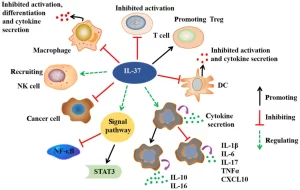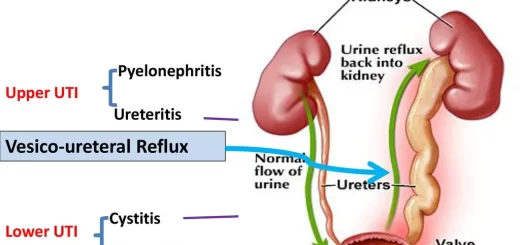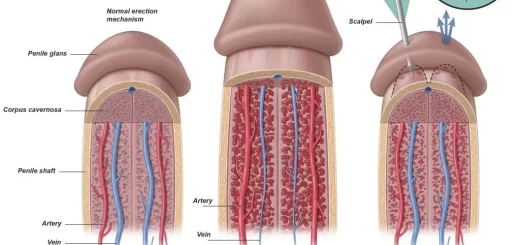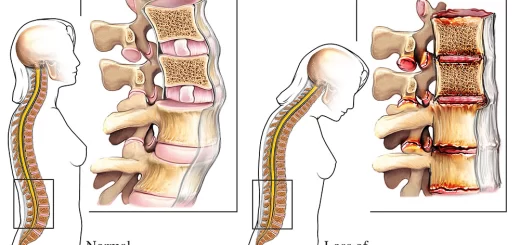Cytokines function, use, definition, inflammation and side effects
Cytokines are small secreted proteins, that are released by cells and have a specific effect on the interactions and communications between cells, Cytokines are important in cell signaling, Cytokines are peptides and can’t cross the lipid bilayer of cells to enter the cytoplasm, they include chemokines, interferons, interleukins, lymphokines, and tumour necrosis factors.
Cytokines
Cytokines are a large group of molecules involved in signaling between cells during the immune response, They are proteins (usually glycoproteins of low molecular weight).
Mode of action
Cytokines are secreted by many cell types (principally activated lymphocytes, macrophages, and dendritic cells) in response to specific stimuli and they bind to specific receptors on target cells exerting their effect on these cells. Cytokines mediate and regulate immune and inflammatory reactions.
Cytokines include the following:
1. Interleukins
This is a large group of cytokines that are produced mainly by T-cells, but also by mononuclear phagocytes or by tissue cells, Most are involved in directing other cells to divide and differentiate or their activation during an immune response. Each interleukin acts on a specific limited group of cells that express the correct receptors for that interleukin E.g.IL2: The most powerful activator and growth factor for T-cells.
2. Tumour necrosis factors
TNF-α a proinflammatory cytokine produced by activated macrophages, and T cells. It causes the death and necrosis of certain tumors in experimental animals. It has inflammatory and immune-enhancing effects. TNF-β (lymphotoxin) is produced by activated lymphocytes.
3. Proinflammatory cytokines of innate immunity (IL-1. IL-6, TNF-α)
They are secreted mainly by macrophages, These cytokines have local and systemic inflammatory effects on the tissues including induction of fever, increased production of leukocytes by the bone marrow, and production of acute phase proteins by the liver. At higher temperatures (during fever), bacterial and viral replication is less-efficient, whereas the adaptive immune response operates more efficiently.
Acute phase proteins include C reactive protein (CRP). mannose-binding lectin and complement components, C-reactive protein acts as an opsonin facilitating the removal of organisms by enhancing phagocytosis, At high concentrations. IL1, IL6, and TNF-α are an important mediator of endotoxin-induced septic shock.
They mediate septic shock by inducing fever and causing hypotension through vasodilatation and an increase in capillary permeability. Also, these cytokines activate the coagulation cascade causing disseminated intravascular coagulation resulting in anoxia of vital organs.
4. Colony-stimulating factors (CSFs)
They are cytokines primarily involved in directing the division and differentiation of bone marrow stem cells. The CSFS direct immature bone marrow stem cells to develop into red blood cells (RBCs), platelets, and the various types of white blood cells.
The balance of different CSFS is partially responsible for the proportion of different immune cell types produced, Some CSFs also promote further differentiation of cells outside the bone marrow, e.g. macrophage CSF (M-CSF) promotes the development of monocytes in blood and macrophages in tissues.
5. Immunosuppressive or anti-inflammatory cytokines
Transforming growth factor β (TGF-β) and IL 10 have an important role in the downregulation of the immune response, They are produced by regulatory T-cells. TGF-β & IL 10 have an anti-proliferative effect on many cells including B. T and NK cells and macrophages, They dampen or downregulate an overactive inflammatory response.
6. Chemokines
The term chemokine refers to a specific class of cytokines that mediates chemotaxis; they attract or induce leukocytes to migrate to areas of infection or tissue damage. Chemokines are produced by various cells in infected areas as endothelial cells and macrophages, e.g., IL-8.
7. Interferons
Interferons (IFNS) are host-coded proteins (cytokine family) that are part of innate immunity, They are produced by intact animal or human cells in response to various inducers, as some viral components.
IFNS are considered the first line of defence against viral infections, They can provide a local rapid response that is often sufficient to control viral infection.
Types
- Type I known as viral interferon: Type I is induced and activated by viruses, it includes interferon alpha INF-α (produced by leukocytes: leukocyte interferon) and interferon beta INF-β (produced by fibroblasts: fibroblast interferon).
- Type Il known as immune interferon or interferon-gamma: INF-γis produced mainly by activated NK cells and T cells.
Induction
- Type I can be induced in response to viral infections by, double-stranded RNA produced during virus replication. This explains why RNA viruses are stronger inducers than DNA viruses.
- Type II interferons are induced by mitogens and not in response to most viral infections.
Effects of Interferon
1. Anti-viral Action Type I interferons (INF-α and INF-β) mediate the early innate immune response to viral infections. Interferon itself is not a direct antiviral agent but it initiates an antiviral state in cells surrounding the infected ones via the following mechanism:
- Type I interferons are produced by virus-infected cells in response to intracellular TCR signalling and other sensors of viral RNA.
- They bind to a specific cell surface receptor on neighbouring uninfected cells.
- They induce the synthesis of cell-encoded enzymes (antiviral proteins), This subsequently leads to blocking of viral replication, No virus is produced by that cell and the spread of the virus is reduced.
Interferons are host species-specific in function but are not specific to a given virus, Many viruses have mechanisms to evade or inhibit the INF response.
2. Immunomodulatory effect
Interferons stimulate activation of innate and specific immune antiviral response including:
- Type I IFN (INF-α and INF-β) activates NK cells, IFN-α and INF-β provide an early, natural defense against viral infection.
- Type II INF (INF-γ) is a potent inducer of macrophage activation.
Interferons stimulate cell-mediated immunity:
- Type I IFN enhances the expression of class I MHC antigens.
- INF-γ is an important immunoregulatory cytokine because of its important role in antigen presentation. INF-γ enhances the expression of class I and II MHC antigens and increases the efficiency of the presentation of antigens to both T-cytotoxic and T-helper cells and the activation of cells.
3. Antiproliferative effect
All interferon types of block cell proliferation at appropriate doses.
Clinical uses of cytokines
- Antiviral: as in the treatment of viral hepatitis caused by HBV or HCV by IFN-α, Genetically engineered recombinant INF is used in the management of severe or chronic viral infection. Pegylated interferon (Peg-INF) is recombinant interferon supplemented with a molecule of polyethylene glycol that increased its plasma half-life to 10 times longer than the native interferon alpha.
- Anti-tumor: as antiproliferative in the treatment of certain leukemias & lymphomas.
- Anti-autoimmune (immunomodulatory) as in the treatment of inflammatory diseases such as Crohn’s disease and rheumatoid arthritis by TNF-α inhibitors or IL-1 receptor antagonists.
- Antibacterial in multidrug-resistant tuberculosis in conjunction with anti-tuberculous drugs.
- Antifungal in treating resistant fungal disease.
- Colony-stimulating factors are used clinically to boost leukocyte numbers and prevent infections in patients who have received cancer chemotherapy.
Side effects
Both naturally induced and manufactured INF can trigger systemic symptoms, associated with many viral infections such as malaise, myalgia, chills, and fever, especially during viremia, That is why interferon therapy causes flu-like side effects.
You can follow science online on Youtube from this link: Science online
You can download Science online application on google Play from this link: Science online Apps on Google Play
Complement system function, Importance of MHC, Classical, Lectin, and alternative Pathways
Features and classification of viruses, Defective viruses & Viral vectors used for gene therapy
Staphylococci definition, diagnosis of staphylococcal infections & treatment




